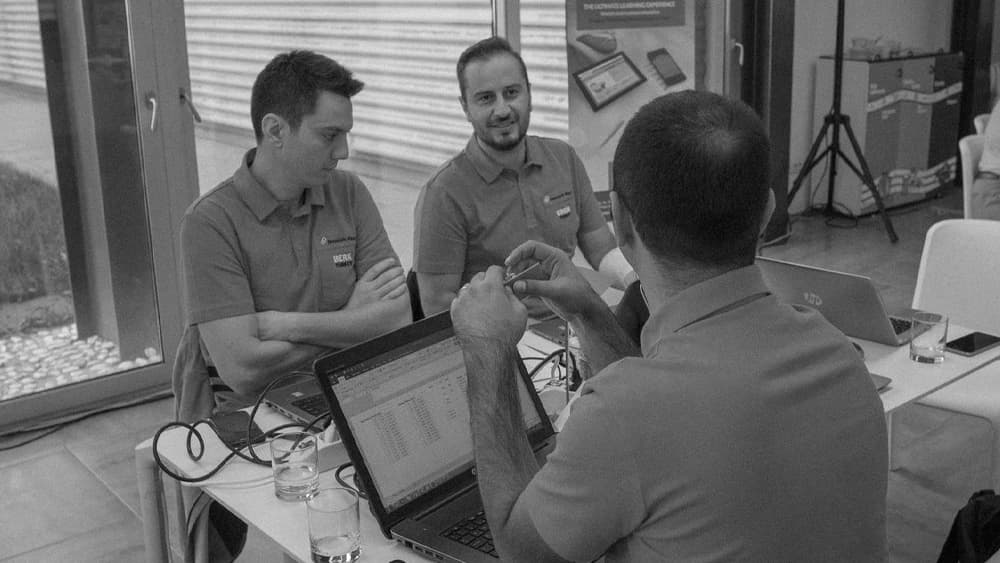Integrated Business Planning
What is Integrated Business Planning (IBP)? And what are the similarities, but also differences when compared to S&OP? In this article, Inchainge discusses everything you need to know about IBP.
What is integrated business planning (IBP)?
Integrated Business Planning (IBP) is the business planning process that extends the principles of Sales and Operations Planning (S&OP) throughout the value chain. It is to create a bridge between strategy and execution. IBP is a next step for companies that already have an S&OP process in place. It is a next step because it integrates the Financial Planning Cycle. The financial function will become part of this cross-functional process. In most companies the business owner of this process will change as well.
Similarities between IBP and S&OP
Integrated Business Planning and Sales and Operations Planning have several similarities between them. These are as follows:
- Monthly process
- Cross-functional approach
- Driven by business strategy
- Tactical planning at an aggregated level
Differences between IBP and S&OP
However, Integrated Business Planning includes content on top of Sales and Operations Planning:
- Financial function involved
- Integration financial planning cycle, like financial budget and forecast
- From volume planning to volume and value planning
- It drives the overall business performance
How does the IBP process work?
Companies have an annual budget cycle, based on their strategic plans and targets. The annual budget projects planned revenues and costs for the year.
In traditional S&OP companies go through a monthly process during which they project for the next 6 to 24 months where demand will go, and what resources need to be available to meet that demand. When gaps are discovered between expected demand and available resources looking this far ahead into the future, this often provides ample time to balance supply and demand, so that by the time real customer orders are submitted, demand can be met.
Suppose that during this monthly S&OP cycle, one would also look 6 to 24 months into the future where expected revenues and costs will go. And how these financial figures would look compared to the annually budgeted revenues and cost. Most likely gaps will occur here as well between the annually budgeted numbers and the monthly updated numbers. Actions could then be taken to address these gaps. Integrating a financial view. When this happens, we actually practice IBP. In IBP the relationship with the financial performance management cycle is very important. Budget and financial forecasting must be aligned and integrated with the steps from the original S&OP cycle.
The challenges of IBP
IBP is a next step in maturity after companies have implemented a proper S&OP process. Integrating finance sounds simple but is not easy at all. People from the physical supply chain side of the business, often speak a different language than people who operate on the financial side. Supply chain people often speak about units, products, and product families, whereas financial people often speak about money, currencies, etc. That also causes both functional areas to be assessed differently with the KPIs that they use. This calls for other participants in the IBP process, compared to participants in the S&OP process.
The 8 common pitfalls when implementing IBP
Be aware of the following risks related to integrated business planning:
- Lack of commitment in some of the needed departments
- If the S&OP process was not yet implemented or stable, IBP is too big of a step
- Targets and forecasts are mixed
- Information not available
- Discussion about numbers instead of the underlying assumptions
- Discussing only short horizon instead of midterm
- Too granular plans and discussions
- Thorough understanding of trade-offs is lacking
Want to know more? Experience IBP!
Because IBP is simple but not easy, a real-life experience creates enormous value for learning about this topic. The participants will feel and recognize the important issues in this process. In our business simulation game, The Cool Connection, we have incorporated the most important functions and decisions.
In this business game the team is forced to make a yearly financial budget and quarterly forecasts. The objective is to close the gaps between prediction (the budget and forecasts) on one hand and attained performance on the other. The best performing teams are both profitable and predictable at the same time. In business game The Cool Connection the team is almost experiencing a real-life IBP process.
Besides our business games, you can learn more in our articles about topics such as Total Cost of Ownership (TCO), strategic alignment and external alignment and collaboration.
 Now you know
Now you know
Now you know that IBP is a next step for companies that already have an S&OP process in place, by integrating the financial planning cycle in this cross-functional process. IBP prompts companies to include planned revenues and costs in their annual budget cycle. Budget and financial forecasting must be aligned and integrated with the steps from the original S&OP cycle. Integrating finance sounds simple but is not easy at all. Supply chain people and finance people tend to speak a different language. Make sure to be aware of the 8 common pitfalls when implementing IBP.
You might want to learn more about

The Cool Connection
The Cool Connection is an innovative web-based business simulation game. It engages participants in making strategic decisions in the management of a manufacturing company of personal care products. Working in teams of four, participants will represent the functional roles of sales, purchasing, supply chain management and finance. They will be confronted with various real-life, real-time dilemmas.

Total Cost of Ownership
When buying new equipment, the price tag only tells you part of the story. Energy costs, maintenance, and repair fees are often several times higher than the initial price! But often these are left unconsidered and hold nasty surprises further down the line. Calculating the Total Cost of Ownership is an important step when planning new investments.

Strategic Alignment
Understanding what strategic alignment really is and why it is important can make the difference between being a successful company and failing. Due to its complexity, the supply chain often faces challenges in aligning its strategy properly and working as one. In this article, Inchainge discusses everything you need to know about strategic alignment.

External Alignment and Collaboration
In an increasingly global and connected world, companies rarely execute supply chain operations themselves, but must outsource certain tasks. To make sure that supply chains across several companies run smoothly, external alignment is essential. In this article, we’ll discuss everything you need to know about external alignment.
Dive into our
knowledge base
Alignment
Blended learning
Experiential learning
Learning
Supply chain
Sustainability
- Sustainability
- Carbon footprint
- Circular Economy
- Does Green Governance drive the ride to a sustainable future?
- Everything You Need To Know About Eco-Efficiency
- Greenwashing: Everything you need to know
- Is it possible to measure the Triple Bottom Line?
- Sustainability v/s Circularity
- The 3Ps Series: People
- The 3Ps Series: Planet
- The 3Ps Series: Prosperity
- The Butterfly Diagram
- The Value Hill
- What are the 3Ps of Sustainability?
- What do we know about the Triple Bottom Line?

